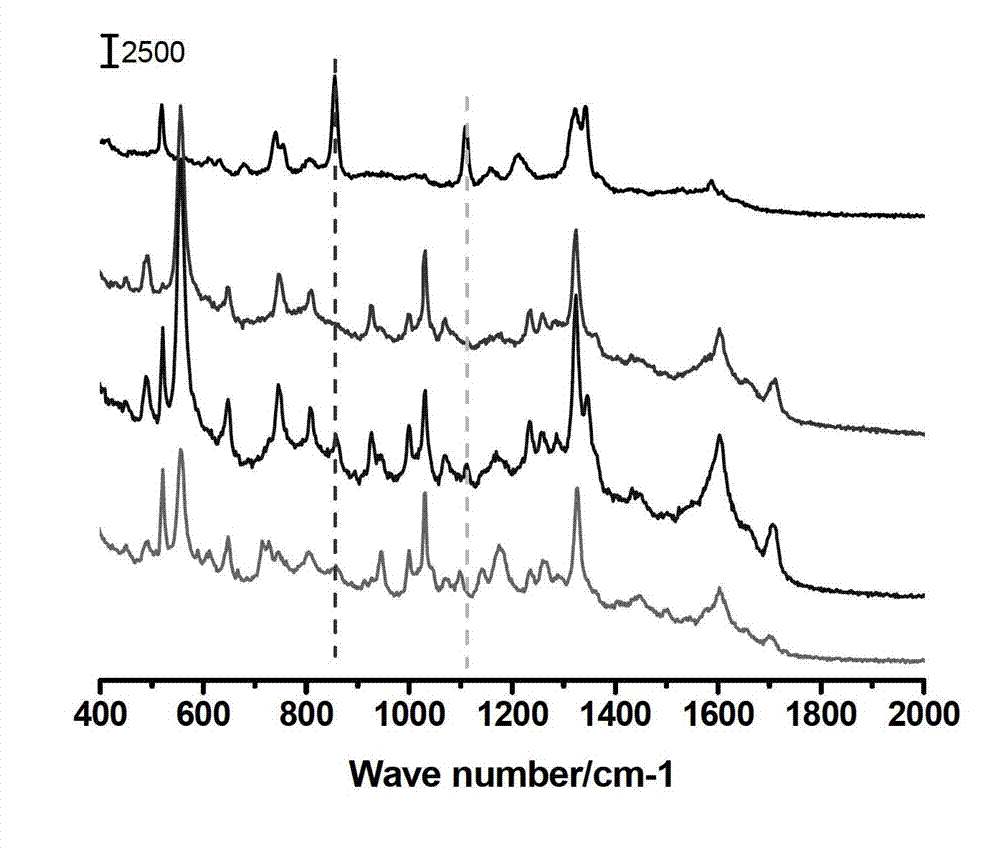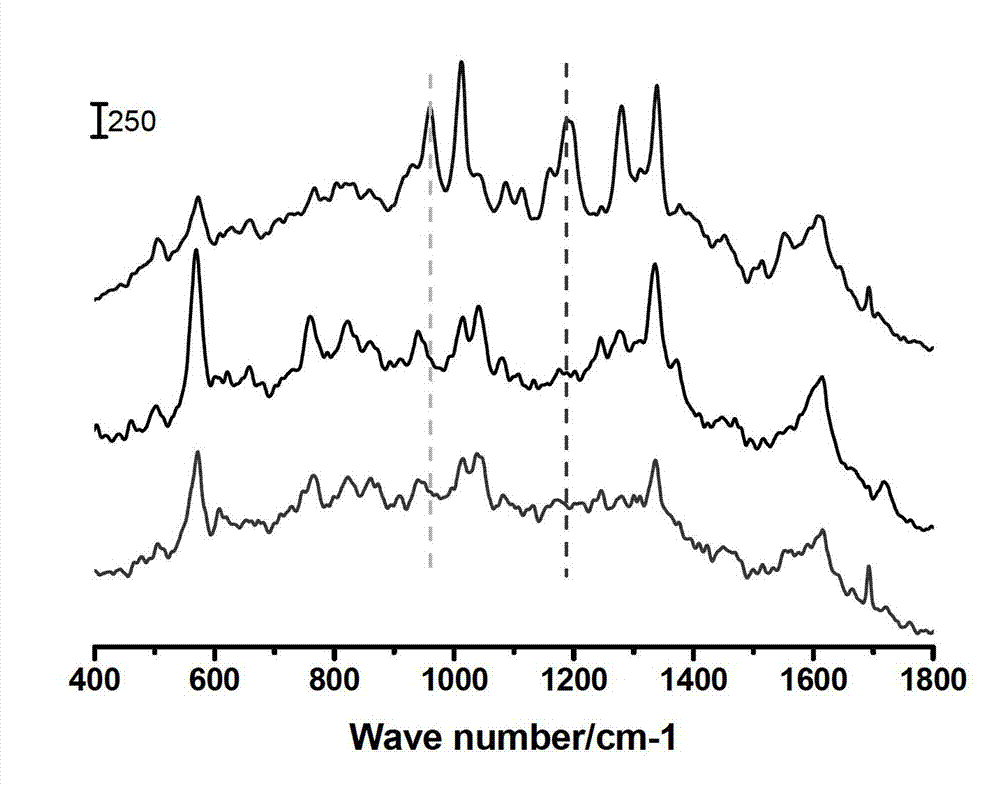Detection method of organophosphorus pesticide residues in tea
A technology of organophosphorus pesticides and detection methods, applied in Raman scattering, material excitation analysis, etc., can solve the problems of false positives, expensive instruments, poor reliability, etc., to overcome false positives, high sensitivity, and reduce detection interference Effect
- Summary
- Abstract
- Description
- Claims
- Application Information
AI Technical Summary
Problems solved by technology
Method used
Image
Examples
Embodiment 1
[0020] The detection of methyl parathion in the tealeaves of embodiment 1
[0021] Instrument: B&W TEK iRaman; power: 40mw; integration time: 10s (A), 20s (B, C, D)
[0022] Sample to be tested:
[0023] (1) 10ppm methyl parathion standard substance, its configuration method is: transfer 1ml of 100ppm methyl parathion standard substance (solvent is acetone) into a 10ml volumetric flask, and prepare 10ppm methyl parathion standard substance with ultrapure water Phosphorus solution.
[0024] (2), blank tea leaves
[0025] (3) For tea leaves containing 2ppm methyl parathion, the preparation method is as follows: take 5g of tea leaves and put them into a beaker, then add 0.1ml of 100ppm methyl parathion standard solution (solvent is acetone) dropwise, and place in the air Let it dry naturally for later use.
[0026] (4) For tea leaves containing 1ppm methyl parathion, the preparation method is as follows: take 5g of tea leaves and put them in a beaker, then add 0.05ml of 100pp...
Embodiment 2
[0036] The detection of omethoate in embodiment 2 tealeaves
[0037] Instrument: B&W TEK iRaman; power: 40mw; integration time: 10s (A), 20s (B, C, D)
[0038] Sample to be tested:
[0039] (1), 10ppm omethoate standard substance, its preparation method is: all move 1ml100ppm omethoate standard substance (solvent is acetone) in the 10ml volumetric flask, be mixed with ultrapure water 10ppm methyl parathion solution.
[0040] (2) For tea leaves containing 1ppm omethoate, the preparation method is as follows: take 5g of tea leaves and put them into a beaker, then add 0.05ml of 100ppm omethoate standard solution (solvent is acetone) dropwise, and place them in the air to dry naturally for later use .
[0041] (3), blank tea leaves
[0042] 1. Extraction
[0043] Take 5g of tea leaves (accurate to 0.01g) and add 15ml of acetonitrile, ultrasonically extract for 10min, take out the supernatant and put it in a 25ml chicken heart bottle, blow it to nearly dry with nitrogen in a wa...
PUM
 Login to View More
Login to View More Abstract
Description
Claims
Application Information
 Login to View More
Login to View More - R&D
- Intellectual Property
- Life Sciences
- Materials
- Tech Scout
- Unparalleled Data Quality
- Higher Quality Content
- 60% Fewer Hallucinations
Browse by: Latest US Patents, China's latest patents, Technical Efficacy Thesaurus, Application Domain, Technology Topic, Popular Technical Reports.
© 2025 PatSnap. All rights reserved.Legal|Privacy policy|Modern Slavery Act Transparency Statement|Sitemap|About US| Contact US: help@patsnap.com


